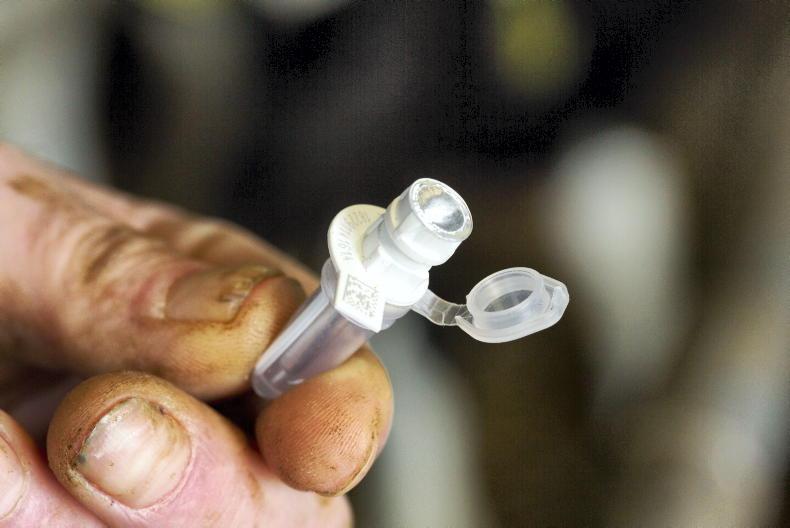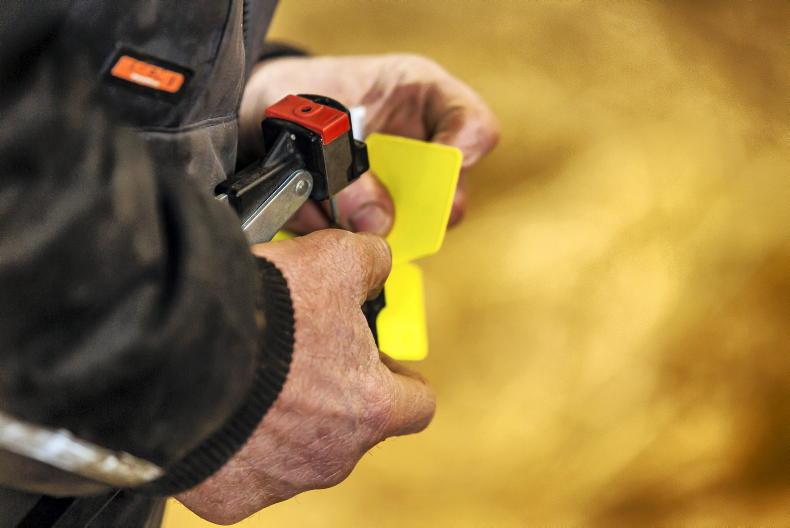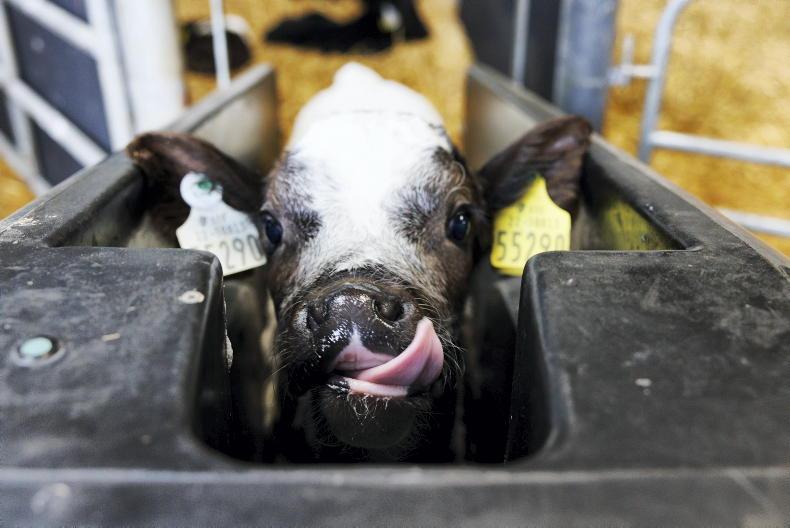A lack of profitability within suckler and store-to-beef systems has seen more farmers migrating towards rearing dairy-beef calves in recent years.
While calves are cheaper to purchase, rearing these animals from two to three weeks of age to slaughter is a highly skilled operation. For farmers starting off in calf rearing, outlined are some tips to keep in mind.
1 Start small and learn as you go
When changing system, there are always lessons to learn and do not underestimate the work involved.
Feeding milk and keeping bedding clean takes time. Disease can quickly take hold in sheds, where hygiene and airflow is inadequate.
If your plan is 50 to 60 calves each year, start year one with half this number to see how the system beds in and you gain experience. There will be issues with housing, feeding and health to address. Fewer animals will make problems easier to sort in year one.
2 Buy bigger batches over a shorter time period
Calves do not suffer hardship and the less stress factors in the system, the better.
Buying 20 to 30 calves over a fortnight is better than buying three or four calves per week over seven or eight weeks.
Buying in dribs and drabs means calves are constantly exposed to a new disease source. It can also mean older calves are mixed with younger stock.
That constant mixing raises stress levels, lowers immunity and leaves animals more prone to pneumonia or scours.
3 Think about the end market before buying
Don’t buy calves on a whim without thinking about the end market. Have you enough grazing and housing to run animals through to slaughter?
Calves born in January will likely finish off grass, particularly heifers. March- and April-born male calves with Blue or Limousin breeding will most likely need finishing out of the shed.
With a bull beef system, finishing animals next May or June will see animals competing with a flush of suckler-bred cattle. Processing demand and price may be weak as a result.
4 Is existing housing adequate for calves?
Sheds on farm used for stores and cows may not be suitable for calves.
A good flow of fresh air is crucial, but not a draught. That may mean adding tin sheets to block prevailing wind.
Calves need bedded flooring, not slats. Clean water is crucial in calf rearing, so make sure there drinking troughs available at a height calves can access. Good internal lighting is also a must.
5 Feeding calves
Calves should be trained to feed from a bucket by the time they arrive on your farm, but were likely kept in individual pens.
Therefore, it may be worthwhile penning calves individually, or in small groups of three and four when they arrive on farm for a few days.
That makes it easier to monitor calves are feeding OK and showing no sign of illness.
Groups can be increased once you are happy with animals.
When feeding milk, use gang feeders with individual compartments, so calves get their allotted milk allocation. Always wash feeders thoroughly after use and allow to drip dry.
6 Buy a good milk replacer
Buy a good-quality milk replacer around 25% protein. Stick to the recommended mixing rate and make sure milk is fed at the correct temperature.
Milk should be the same temperature as if it came straight from the cow. Feeding milk that has cooled increases the risk of scour.
7 Offer concentrate and hay
Feeding concentrate and a forage such as hay helps rumen development, aiding the transition off milk as the calf grows.
Calves should be eating 1kg/day of concentrate by the time they reach weaning weight. Continue feeding meal after turnout to allow calves transition on to fresh grass.
8 Use weaning weight for stocking density
A common mistake is overstocking calves in pens. Calves will weigh 40kg to 60kg when they arrive on farm, but will be weaned around 120kg.
As such, stocking rates should be based on weaning weight to ensure plenty of lying space from day one. Overstocking reduces weight gain and delays weaning.
Allow a minimum of 1.5m2 per calf in terms of lying space in group pens.
9 Bedding
Bedding should be clean and dry at all times, so don’t skimp on straw. Top pens up every day or second day as required.
10 Calf health
Allow calves to settle on farm for 24 to 48 hours, then vaccinate against respiratory diseases and disbud horns, if necessary.
Clostridial vaccines can be given before turnout to grass and keep a close eye for worm burdens when grazing.
Read more
Buying a new slurry tanker – the essential options
Dairy Management: preparing for calving
A lack of profitability within suckler and store-to-beef systems has seen more farmers migrating towards rearing dairy-beef calves in recent years.
While calves are cheaper to purchase, rearing these animals from two to three weeks of age to slaughter is a highly skilled operation. For farmers starting off in calf rearing, outlined are some tips to keep in mind.
1 Start small and learn as you go
When changing system, there are always lessons to learn and do not underestimate the work involved.
Feeding milk and keeping bedding clean takes time. Disease can quickly take hold in sheds, where hygiene and airflow is inadequate.
If your plan is 50 to 60 calves each year, start year one with half this number to see how the system beds in and you gain experience. There will be issues with housing, feeding and health to address. Fewer animals will make problems easier to sort in year one.
2 Buy bigger batches over a shorter time period
Calves do not suffer hardship and the less stress factors in the system, the better.
Buying 20 to 30 calves over a fortnight is better than buying three or four calves per week over seven or eight weeks.
Buying in dribs and drabs means calves are constantly exposed to a new disease source. It can also mean older calves are mixed with younger stock.
That constant mixing raises stress levels, lowers immunity and leaves animals more prone to pneumonia or scours.
3 Think about the end market before buying
Don’t buy calves on a whim without thinking about the end market. Have you enough grazing and housing to run animals through to slaughter?
Calves born in January will likely finish off grass, particularly heifers. March- and April-born male calves with Blue or Limousin breeding will most likely need finishing out of the shed.
With a bull beef system, finishing animals next May or June will see animals competing with a flush of suckler-bred cattle. Processing demand and price may be weak as a result.
4 Is existing housing adequate for calves?
Sheds on farm used for stores and cows may not be suitable for calves.
A good flow of fresh air is crucial, but not a draught. That may mean adding tin sheets to block prevailing wind.
Calves need bedded flooring, not slats. Clean water is crucial in calf rearing, so make sure there drinking troughs available at a height calves can access. Good internal lighting is also a must.
5 Feeding calves
Calves should be trained to feed from a bucket by the time they arrive on your farm, but were likely kept in individual pens.
Therefore, it may be worthwhile penning calves individually, or in small groups of three and four when they arrive on farm for a few days.
That makes it easier to monitor calves are feeding OK and showing no sign of illness.
Groups can be increased once you are happy with animals.
When feeding milk, use gang feeders with individual compartments, so calves get their allotted milk allocation. Always wash feeders thoroughly after use and allow to drip dry.
6 Buy a good milk replacer
Buy a good-quality milk replacer around 25% protein. Stick to the recommended mixing rate and make sure milk is fed at the correct temperature.
Milk should be the same temperature as if it came straight from the cow. Feeding milk that has cooled increases the risk of scour.
7 Offer concentrate and hay
Feeding concentrate and a forage such as hay helps rumen development, aiding the transition off milk as the calf grows.
Calves should be eating 1kg/day of concentrate by the time they reach weaning weight. Continue feeding meal after turnout to allow calves transition on to fresh grass.
8 Use weaning weight for stocking density
A common mistake is overstocking calves in pens. Calves will weigh 40kg to 60kg when they arrive on farm, but will be weaned around 120kg.
As such, stocking rates should be based on weaning weight to ensure plenty of lying space from day one. Overstocking reduces weight gain and delays weaning.
Allow a minimum of 1.5m2 per calf in terms of lying space in group pens.
9 Bedding
Bedding should be clean and dry at all times, so don’t skimp on straw. Top pens up every day or second day as required.
10 Calf health
Allow calves to settle on farm for 24 to 48 hours, then vaccinate against respiratory diseases and disbud horns, if necessary.
Clostridial vaccines can be given before turnout to grass and keep a close eye for worm burdens when grazing.
Read more
Buying a new slurry tanker – the essential options
Dairy Management: preparing for calving









SHARING OPTIONS